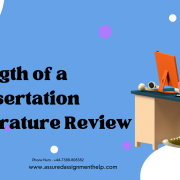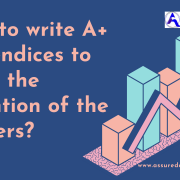Written Assignment 1
DUE DATE AND TIME: Week 7, 26/04/2017, Wednesday, 11:59PM
PERCENTAGE OF FINAL GRADE: 40%
HURDLE DETAILS: No hurdle requirement
Description / Requirements
In recent years, there has been an increasing number of multinational companies (MNCs)
emerged from developing countries, such as Brazil, Russia, India, China & South Africa – so-called BRICS nations. International human resource management has been identified as a pressing challenge for this cohort of emerging MNCs, as they need to face different demands and gravities as a result of cultural and institutional influences on their international management strategies and practices, which are derived from both home and host countries
whereby businesses are operating.
In this assignment, you, assumingly as an external global human resource management consultant, were appointed by one of Chinese MNCs: Alibaba – an e-commerce giant that had just recently opened an office in Melbourne, Australia. Since the 2010s, Alibaba has established several international branches across USA, Europe and Asia, with a total number of 36,450 full-time employees worldwide working for the company in 2016. You were asked to conduct a feasibility analysis, which aims at helping the CEO, Mr Jack Ma, and his international human resource management team develop an awareness and understanding of how different culture and institutions in Australia and China may impact on developing and implementing Alibaba’s international human resource management strategies.
Your analysis should involve addressing the following three important questions:
1) What are the main cultural values between Australia and China that would likely challenge Alibaba to select and manage employees of their Melbourne office?
2) What are the main institutional differences between Australia and China that could impact on Alibaba’s design of their pay systems, benefits and compensation for employees working inside China and those in Australia?
3) Why is it (or not) possible for Alibaba to transfer their domestic HRM practices to Australia?
In addressing the-above questions you should draw on authoritative sources to support your arguments and analysis. What counts as ‘authoritative’ are peer-reviewed journal articles, scholarly texts and research books, mainstream media, employer associations, trade unions, and public institutions with an interest in the management of labour or the regulation of workplace relations in Australia and China. You should not offer personal opinions or rely on personal experience. Nor should you refer to internet blogs, vanity sites and similar, recognisable by their having no legitimacy in representation and no authority accountable to public, political or academic review.
Please also note the following:
– Adhere to the word limit of your essay within 3000 words (plus or minus 10%, exclusive of the reference section). Any assignment content over or below the limit will not be examined.
– There is no requirement or recommendation as to the number of maximum sources that should be cited. However, as a common rule of thumb, a minimum of citing at least 10 references is required to write an essay of 3000 words.
– This is not a group assignment.
– Double-space your work, as it makes the text easier to read for the examiner.
– Papers that use no citation will attract an automatic zero. Resubmission is not an option.
– Papers that have no reference list will also attract an automatic zero. Resubmission is not an option.
– Papers that do not apply correct citation format will be marked down. If you are unsure of how to cite sources used to develop arguments in university level essays, you should consult the resources made available in the ‘writing essays’ folder on this unit’s CloudDeakin web-site. Examiners will allow some leeway for minor errors if a genuine
attempt to apply a correct citation format is evident.
Note: For Bachelor of Commerce core units: Students must correctly use the Harvard style of referencing.
– Papers that apply citation to mask plagiarism will be automatically referred to the Academic Progress Committee, as will all cases of plagiarism. If you are unsure of what constitutes plagiarism, you should consult the resources made available in the ‘writing essays’ folder on this unit’s CloudDeakin web-site.
– The expected format of the assessment task is a standard university ‘essay’ (i.e., opening with an introduction, followed by a body of content setting out the arguments, finishing with a conclusion summarising the key points). It is not a ‘report’; hence do not provide an executive summary or table of contents.
Please refer to the marking rubric attached at the end of this document to understand the assessment criteria of your written assignment.
Submission Instructions
Please upload and submit your written assignment on CloundDeakin, under the folder named as “MMH352-T1 -Written Assignment Submission Folder”, no later than 11:50pm, Wednesday, 26 April
You must keep a backup copy of every assignment you submit, until the marked assignment has been returned to you. In the unlikely event that one of your assignments is misplaced, you will need to submit your backup copy.
Any work you submit may be checked by electronic or other means for the purposes of detecting collusion and/or plagiarism. Turnitin is also provided on CloudDeakin so you can check your work against the similarity report initially under draft box.
When you are required to submit an assignment through your CloudDeakin unit site, you will receive an email to your Deakin email address confirming that it has been submitted. You should check that you can see your assignment in the Submissions view of the Assignment dropbox folder after upload, and check for, and keep, the email receipt for the submission.
Notes
• Penalties for late submission: The following marking penalties will apply if you submit an assessment task after the due date without an approved extension: 5% will be deducted from available marks for each day up to five days, and work that is submitted more than five days after the due date will not be marked. You will receive 0% for the task. ‘Day’ means working day for paper submissions and calendar day for electronic submissions. The Unit Chair may refuse to accept a late submission where it is unreasonable or impracticable to assess the task after the due date.
• For more information about academic misconduct, special consideration, extensions, and assessment feedback, please refer to the document Your rights and responsibilities as a student in this Unit in the first folder next to the Unit Guide of the Resources area in the CloudDeakin unit site.
• Building evidence of your experiences, skills and knowledge (Portfolio) – Building a portfolio that evidences your skills, knowledge and experience will provide you with a valuable tool to help you prepare for interviews and to showcase to potential employers. There are a number of tools that you can use to build a portfolio. You are provided with cloud space through OneDrive, or through the Portfolio tool in the Cloud Unit Site, but you can use any storage repository system that you like. Remember that a Portfolio is YOUR tool. You should be able to store your assessment work, reflections, achievements and artefacts in YOUR Portfolio. Once you have completed this assessment piece, add it to your personal Portfolio to use and showcase your learning later, when applying for jobs, or further studies. Curate your work by adding meaningful tags to your artefacts that describe what the artefact
represents.








